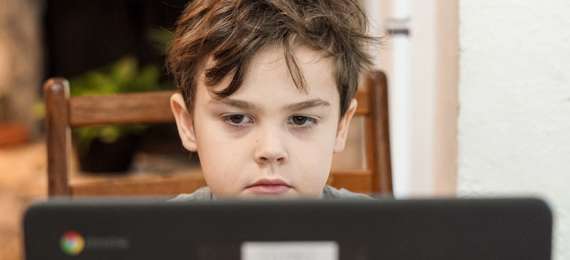
Photo by @thomascpark on Unsplash
Before I founded Nightingale, I studied applied psychology, with a focus on developmental psychology. Once I finished my degree I taught children with autism, carried out research with children with down syndrome, specific language impairment and dyslexia and qualified as a primary teacher.
This experience stood me in very good stead when I worked with LEGO, testing new digital products with children - I automatically tailored my approach to fit their needs and ensure I got good quality data from the testing sessions. When I was asked to deliver a talk on carrying out effective research with children, it made me consider how working with younger participants differs from working with adults, so I could pick out the essential elements for running a successful research session.
This guide details the key things you need to bear in mind when researching or testing with children. If you'd like some more advice, or you'd like Nightingale to manage, design, plan or run research with children, please get in touch.
Three things to remember when your research participants are children:
- It's vital to design the research carefully. Consider how you will gain and hold the attention of the child and maintain the right level of energy in the session. Plan warm up activities, write some conversation starters and create a list of prompts to support children who might be reluctant to speak.
- You can't assume anything about your participants. Children have limited life experience and can sometimes have unexpected gaps in their knowledge - they won't necessarily know what country they live in, for example. You can't take any level of knowledge or understanding for granted.
- You must be ready to adapt your approach. Because the skill and understanding of children varies widely, you need to be able to change your approach to suit the needs of the particular child you're working with. That might mean rephrasing a question, or even changing the structure of the testing protocol.
The main challenges
Age and ability
There is a huge difference between a six year old and a ten year old and everything has to be adapted to the particular needs of the child you’re working with. You can’t assume a child can read or that they can understand what you’re saying - you have to be able to modify your approach on the fly depending on their reactions and responses.
Power dynamics
It’s very unusual for a child to be asked seriously, by an adult who isn’t their relative or teacher, for their experiences and opinions - it’s a very unfamiliar interaction and one they don’t have a script for. You need to be very aware of how you might be influencing the interaction, through your approach, your language, power dynamics and how you’re interpreting things.
It’s important to be aware of how comfortable the child is and to take into account that they won’t necessarily feel able to speak up if they’re not happy.
Energy and focus
Some children are very energetic and chatty, others are more reserved and quiet. The energy of the session needs to be brought to a stable middle and sustained (which can be very tiring!). Small talk is vital, to assess the child’s language skills and to make them comfortable. School, toys and siblings are usually good conversation topics, but be aware that a child may tell you things an adult wouldn’t - like their dog recently died or their parents have just split up.
Staying on task can be a challenge, especially if a child has an interest they really want to tell you about!
Designing the research
Timing and location
Consider when the research will be carried out - after school, children are often tired and hungry and might not be in the right frame of mind to engage. Weekends/school holidays may be better.
Home is a safe space, but it can be too relaxed - siblings, pets and helpful relatives can easily derail a session. Offices can be intimidating. School can be the perfect combination of familiar but structured, depending on the method.
Be kind to parents - remember they may have other children to deal with. Allow siblings to come along too and provide a space for them to play. Provide smaller incentives for siblings - eg stickers.
Methods
As with all research, the suitability of the method depends on what you’re researching/trying to find out. With children, you also need to consider how the method might affect their ability to engage.
Children may maintain focus better in a one-to-one testing session, but they may also struggle to speak directly to an adult, or find the situation quite intense and intimidating. Group sessions can be great for getting insight into how children play a game together, or how they discuss particular topics amongst themselves, but they require a great deal of planning and structure to ensure they don't descend into chaos.
When choosing a method, consider:
- The type of insights you need - one to one sessions gather more detail, group sessions give a more naturalistic understanding of how children engage and play
- The age and ability of the children - younger children need a shorter, more open structure, whereas older children can generally cope with longer, more focused sessions
- The nature of the product/service you are testing - do children engage with it at home? In a group? In a noisy situation? Does your testing session need to reflect the typical conditions of use?
Starting the session
Remember that the research session is likely to be very unfamiliar to the child - introduce yourself, set the scene very clearly so the child understands what expected of them and make sure to tell the child they can go to toilet or leave whenever they want. Assure younger children that their parent/carer is nearby.
Use small talk to quickly determine the level of energy and engagement the child has, their language level, their interest in the area you’re researching.
Give very clear and simple instructions and check the child has understood - repeat or reword details if the child seems confused. Don’t overload the child with information - if there’s a lot to cover, break the session down into multiple steps and explain each step as it arises.
Questions and prompts
The research materials have to be designed to suit all the age groups you’re working with - they can’t be too complicated or too ‘babyish.’ You need to be prepared to adapt quickly to each individual participant.
Identify in advance the points where children might not understand. If you ask ‘Do you ever play on a tablet?’ the child might answer ‘no’ because they call it an iPad, not a tablet. Instead, you might point to a tablet and say ‘do you ever play on one of these?’ and listen to what the child calls it.
Children can be very literal. If you ask ‘do you own a tablet?’ they might answer no because they share it with a sibling. If a question is important, it might be worth coming at it a few different ways to confirm the answer.
Prompting vs helping vs stopping
A child may approach a task very slowly or without much concentration. It can be tempting to jump in quickly and move them forward, but doing so can seriously bias the results. It can also frustrate the child or make them feel rushed.
Deciding when to prompt, when to step in and help and when to simply stop the session takes careful judgement. The main thing is not to upset the child - no research is worth that.
Judge the level of encouragement the child needs - some children need constant verbal feedback, others find it annoying.
Pitfalls to avoid
One of the biggest dangers of researching with children is that you’ll end up with messy data that’s difficult to interpret.
This problem is usually caused by:
- vague questions/questions children can’t answer
- over-prompting
- over-interpreting responses
- overloading the session so the child becomes tired/frustrated
Focus on what it is you really need to find out and ensure those questions are answered - other details are a bonus.
If you'd like to learn more about researching with children, take a look at this talk I did for the The Research Thing.



